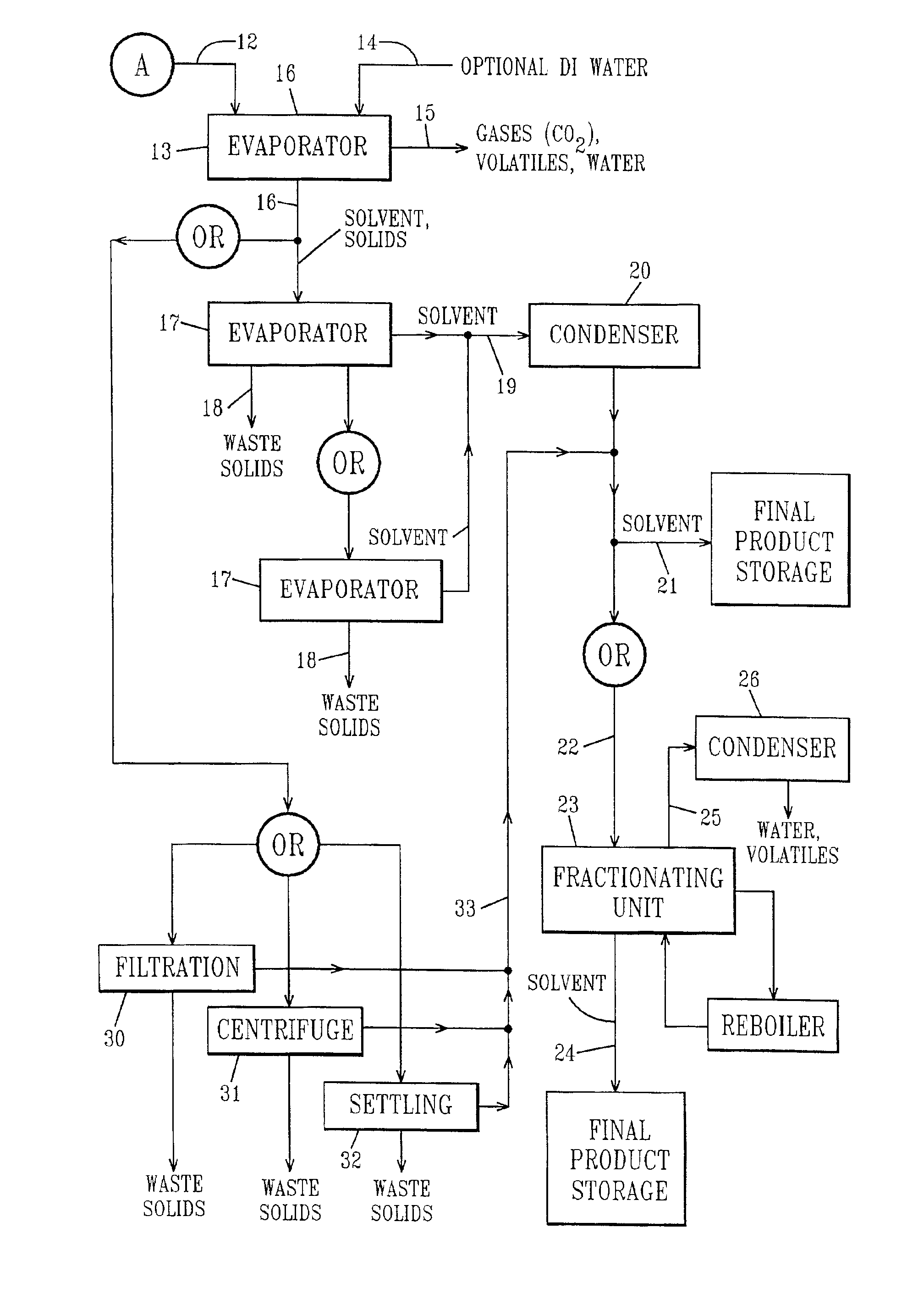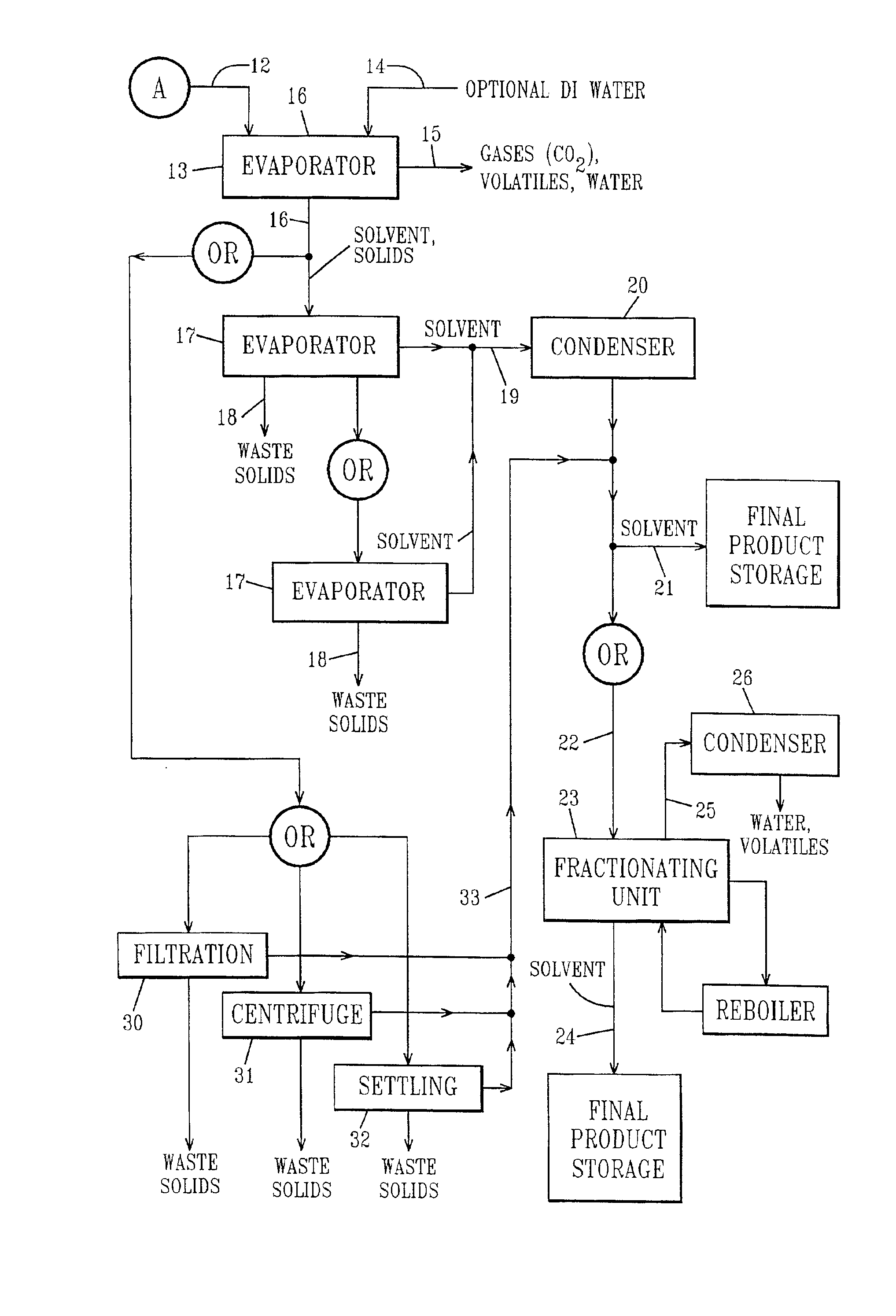Method for recovering an organic solvent from a waste stream containing supercritical CO2
a waste stream and organic solvent technology, applied in the field of recovering organic solvents, to achieve the effects of reducing or avoiding waste disposal, reducing raw material purchase costs, and reducing waste disposal costs
- Summary
- Abstract
- Description
- Claims
- Application Information
AI Technical Summary
Benefits of technology
Problems solved by technology
Method used
Image
Examples
Embodiment Construction
[0012]The etching compositions which are used and subsequently result in the waste streams treated according to the present invention comprise supercritical CO2 and an organic solvent. The organic solvent employed includes oxolanes, sulfoxolanes, esters, ketones, aldehydes, lactones, halogenated solvents, amines, imides and monohydric alcohols. Examples of suitable esters are esters of carboxylic acids, benzoic acid, phthalic acid, isophthalic acid and terephthalic acid, and especially the C1-C6 alkyl esters. Preferred organic solvents are propylene carbonate, homologs of propylene carbonate, N-methyl pyrrolidone, gamma butyrolactone, methylene chloride, benzyl alcohol, N-formyl morpholine, N-formyl piperidine, cyclohexanone, cyclopentanone, methyl benzoate, diglyme, 2-methyl tetrahydrofuran, and methyl and ethyl esters of phthalic, isophthalic or terephthalic acids. The more preferred solvents employed are propylene carbonate, N-methyl pyrrolidone and gamma butyrolactone, with prop...
PUM
| Property | Measurement | Unit |
|---|---|---|
| pressure | aaaaa | aaaaa |
| temperature | aaaaa | aaaaa |
| pressure | aaaaa | aaaaa |
Abstract
Description
Claims
Application Information
 Login to View More
Login to View More - R&D
- Intellectual Property
- Life Sciences
- Materials
- Tech Scout
- Unparalleled Data Quality
- Higher Quality Content
- 60% Fewer Hallucinations
Browse by: Latest US Patents, China's latest patents, Technical Efficacy Thesaurus, Application Domain, Technology Topic, Popular Technical Reports.
© 2025 PatSnap. All rights reserved.Legal|Privacy policy|Modern Slavery Act Transparency Statement|Sitemap|About US| Contact US: help@patsnap.com



